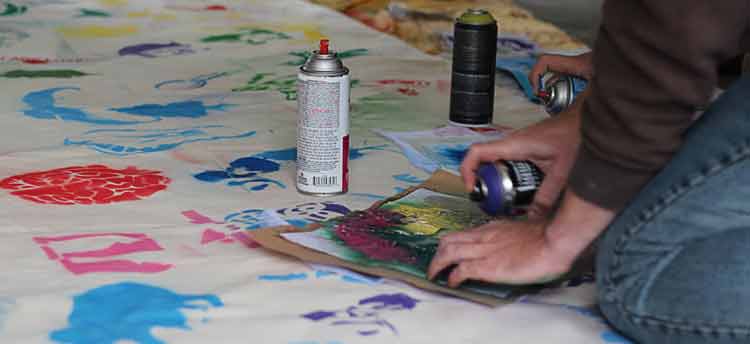Look at what our students are doing!

EDCI 352 Multiliteracies Curriculum
Graffiti as literacy.
For some, semiotics can be a very abstract concept to grasp. However, it is very important that secondary teachers have some understanding of it, so they can get to know who their students are, where they come from and why they do what they do, so they can tailor their lesson plans accordingly. More so, I wanted to show my EDCI 352 students how mindful they have to be when combining textbooks, visual materials, etc. in their classrooms, because everything they add to a lesson plan can change completely the meaning of what they are trying to convey, because nothing is neutral. For me, this lecture was one of my favorites, not because I got to wear shiny bright red high heels in class, but also because I could see how much fun students were having. To me, there is no learning without fun. As we progresses into the semiotic analysis of the red shoes, it was very interested to see how its meaning kept changing towards the end of the class. It start as a symbol of power, moving to sexual and sensual connotation and ending with symbol of struggle, grieving and gay rights. It was very interesting and insightful. My course evaluation was unanimous: it was students’ favorite class. One student said: “It was flawless and I finally understood semiotics and how to apply it in my classes.”
My whole curriculum is designed around Lil’wat First Nations’ learning principles as articulated by Dr. Lorna Williams, Associate Professor Emerita. Broadly these learning principles are:
- Put the learning of others before your own
- Create your work so that it will benefit seven generations to follow
- Find your passion to energize and enhance your community
Our term started with an Indigenous welcome ceremony at the First People’s House. We had drumming, dancing and words of wisdom from the elders and from Dr. Robina Thomas, the Director of Indigenous Academic and Community Engagement. The same day, I brought to the ceremony music and artifacts from Brazilian Indigenous People to also honor my ancestors and to show students that in the South, Indigenous Learning Principles are not that different. This highlights even more the importance of looking at curriculum, independent of subject area, through Indigenous lenses. This Traditional Indigenous welcome ceremony also open three weeks of in and out of class explorations of First Nations ways of teaching and learning. As part of this process we learned from one of the resident elder, the ancient tradition of knitting. We then, reflected on the infinite possibilities of using knitting as a tool for teaching and learning in any discipline.
Throughout the term, we also explored theatre, personal geographies, secret objects, the Little Prince, and so forth as literacies. My goal was to show my students that anything can be a teaching and learning tool, because to me, teaching has absolutely nothing to do with content delivery. Teaching is about looking into students’ eyes, listening to what they have to say, paying attention to their lives. Teaching is about touching students’ hearts, minds and hands, which is not very common in North America. In the South, we touch more our students and that makes a huge different in the classroom environment. To be a good teacher it is necessary to be a good story teller, but most of all, a good story listener.
